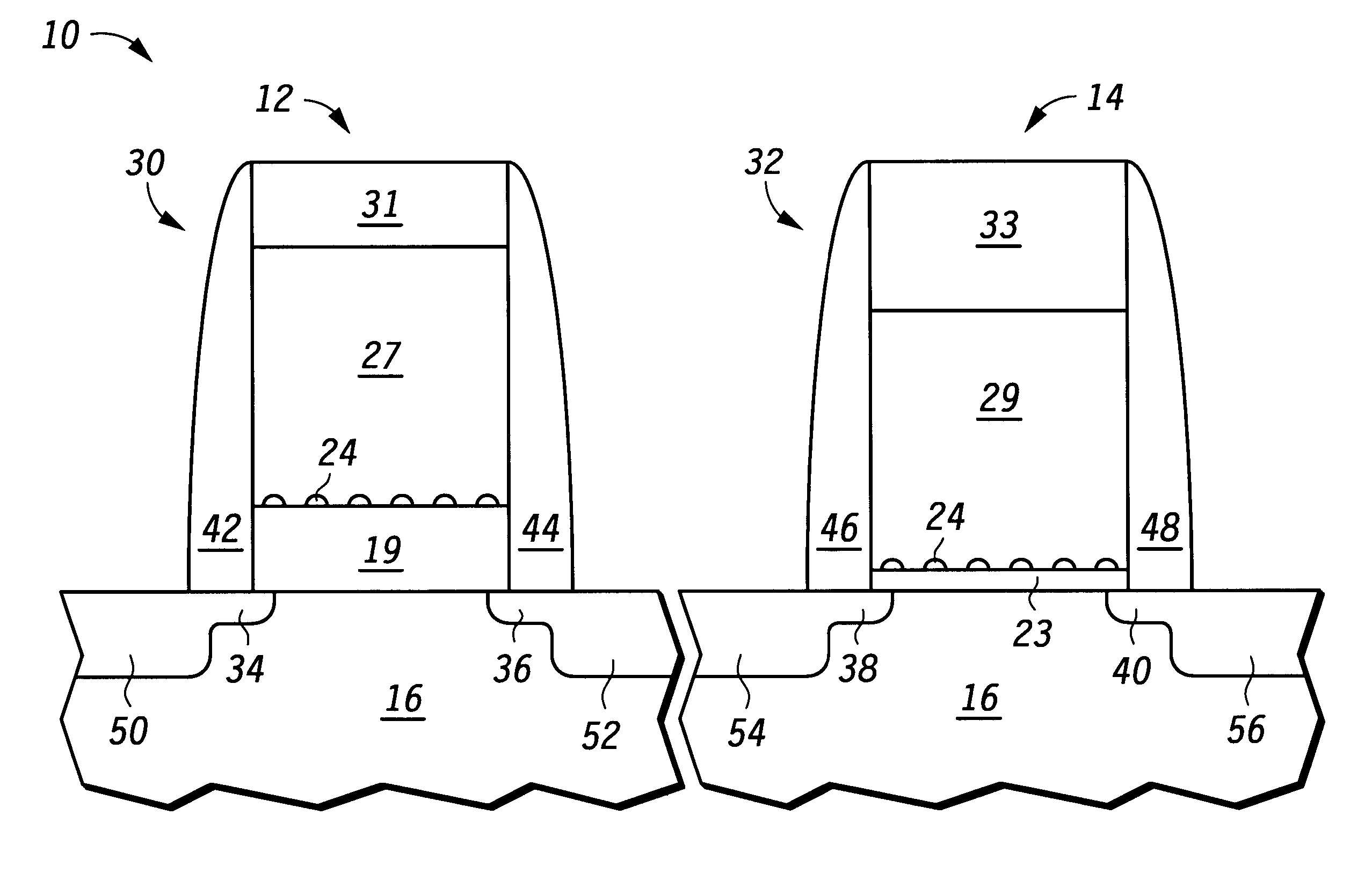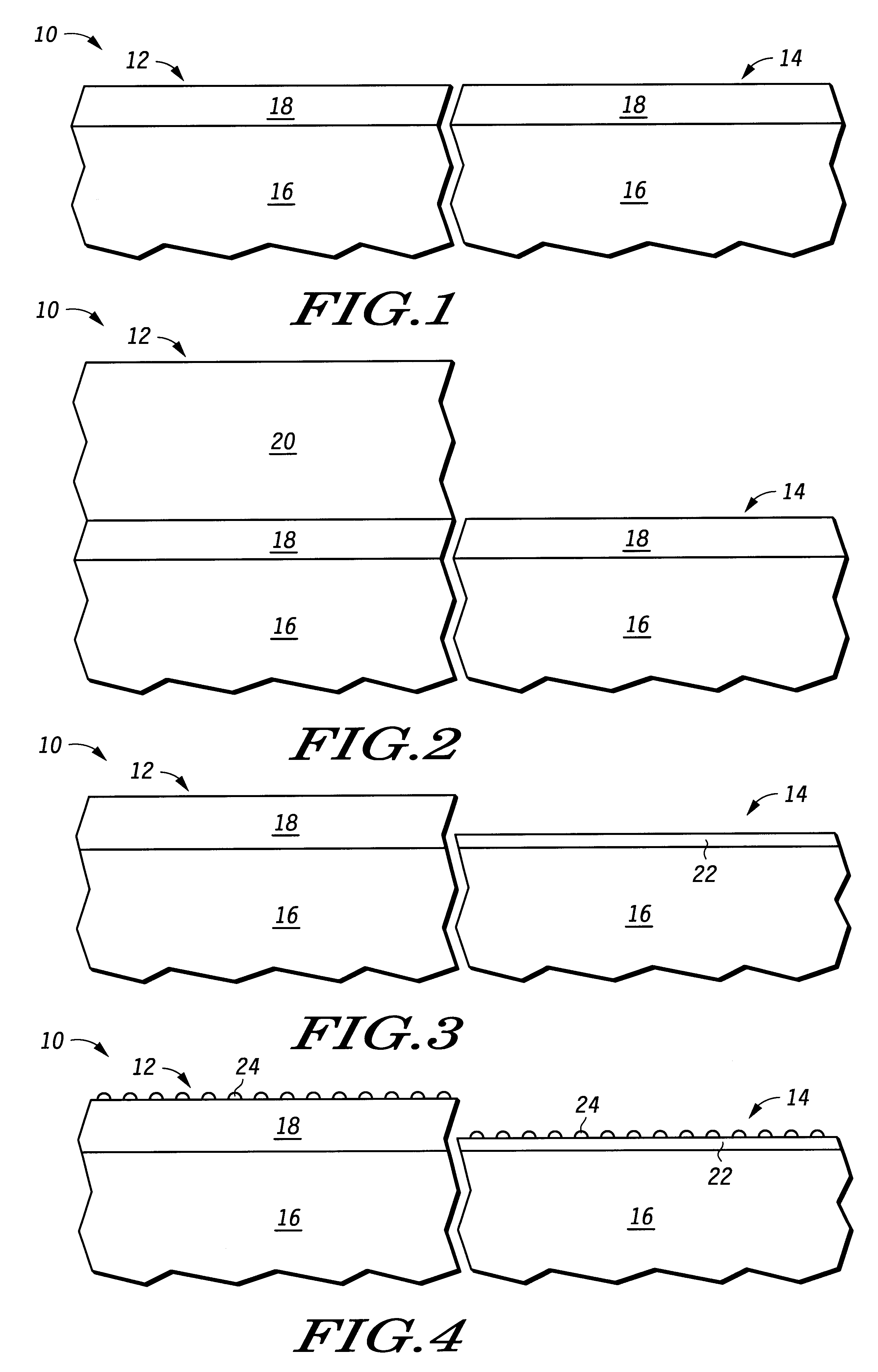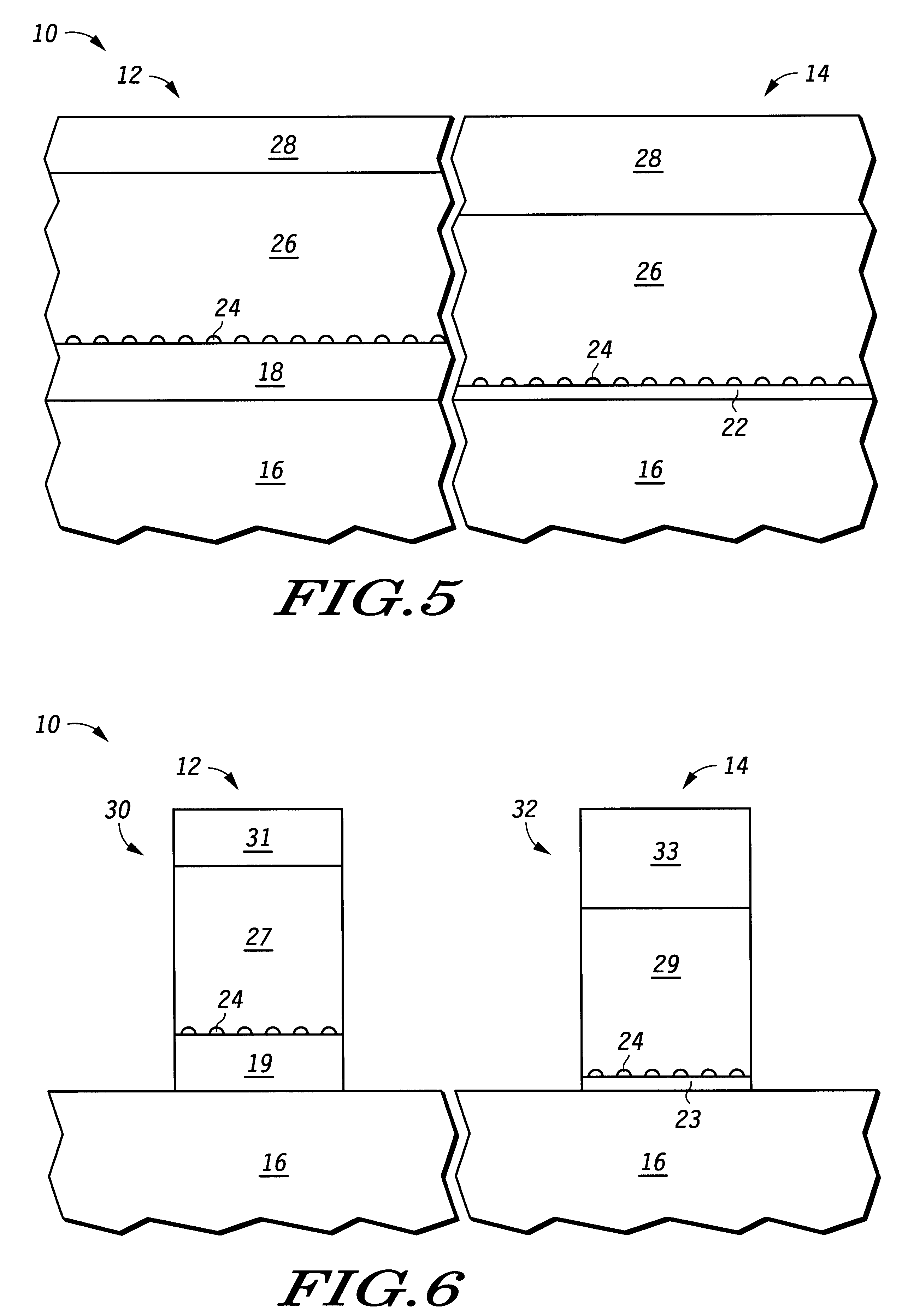Integration of two memory types on the same integrated circuit
a technology of integrated circuits and memory types, applied in the direction of electrical equipment, instruments, semiconductor devices, etc., can solve the problems of uneconomical to have both dram and nvm on the same device, the processing required for drams is very different from that of nonvolatile memories, and the drams are relatively slow in terms of their ability to be written
- Summary
- Abstract
- Description
- Claims
- Application Information
AI Technical Summary
Benefits of technology
Problems solved by technology
Method used
Image
Examples
Embodiment Construction
The ability to have high density, high speed.memory and nonvolatile memory (NVM) on the same integrated circuit is achieved by utilizing the characteristic of a certain type of nonvolatile memory structure that can be made to operate much like a DRAM. This is used in combination with a NVM, which has normal NVM operating and retention characteristics, with minimal changes in the processing required to achieve both types of memories. Thus, the additional amount of processing required to achieve both types is very small. The high speed, high density memory uses a very reduced tunnel dielectric thickness between the substrate and the storage elements. The storage elements are nanocrystals which in combination with the very thin tunnel dielectric result in high speed operation.
Shown in FIG. 1 is an integrated circuit 10 having a nonvolatile memory (NVM) region 12 and a dynamic nanocrystal memory (DNM) region 14. Integrated circuit 10 comprises a substrate 16 and at this stage in process...
PUM
 Login to View More
Login to View More Abstract
Description
Claims
Application Information
 Login to View More
Login to View More - R&D
- Intellectual Property
- Life Sciences
- Materials
- Tech Scout
- Unparalleled Data Quality
- Higher Quality Content
- 60% Fewer Hallucinations
Browse by: Latest US Patents, China's latest patents, Technical Efficacy Thesaurus, Application Domain, Technology Topic, Popular Technical Reports.
© 2025 PatSnap. All rights reserved.Legal|Privacy policy|Modern Slavery Act Transparency Statement|Sitemap|About US| Contact US: help@patsnap.com



